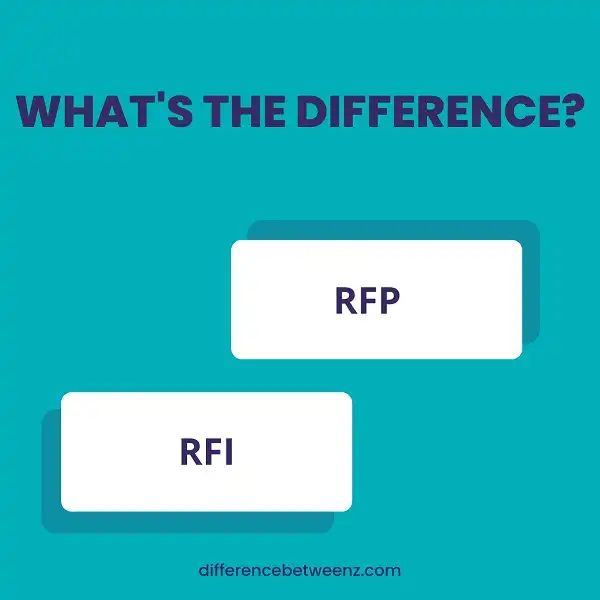Businesses use requests for proposals (RFPs) and requests for information (RFIs) for different purposes. An RFP is used to solicit proposals from potential vendors for a particular product or service, while an RFI is used to collect information about products or services that are already known. In this blog post, we will discuss the key differences between RFPs and RFIs.
What is RFP?
RFP stands for Request for Proposal, and it is a document that businesses use to solicit proposals from vendors. The RFP outlines the specific needs of the business, and vendors submit their proposals in response. RFPs can be used for a wide variety of products and services, from office supplies to construction contracts. Vendors typically submit their proposals in a sealed envelope, and the RFP process can be very competitive. Businesses typically award the contract to the vendor who provides the best value for the price. RFPs are an important part of the procurement process, and they help to ensure that businesses get the best possible products and services at the best possible price.
What is RFI?
RFI request for information is a formal method used by organizations to gather information from suppliers. It involves issuing a document that outlines the organization’s requirements and asks suppliers to provide information about their products or services. This information can then be used to make decisions about which supplier to use. RFI’s are often used in conjunction with RFP’s (request for proposal) and can be an effective way to assess the market and gather information about potential suppliers. When issuing an RFI, it is important to be clear about the organization’s requirements and what information is being sought. RFI’s should also be issued in a timely manner to allow enough time for suppliers to respond.
Difference between RFP and RFI
RFPs and RFIs are both solicitation documents that organizations use to gather information from potential vendors. RFPs are typically used when an organization is ready to make a purchase, and it provides vendors with specific instructions on how to submit a proposal. RFIs, on the other hand, are typically used when an organization is still in the research stage and is looking for general information about products or services. As a result, RFPs tend to be more detailed than RFIs. RFPs also usually have a stronger focus on price, while RFIs tend to place more emphasis on vendor qualifications. Ultimately, both RFPs and RFIs can be helpful in the purchasing process, but it’s important to understand the difference between the two before selecting one.
Conclusion
The main difference between an RFP and an RFI is that an RFP is a request for proposals from vendors, while an RFI is a request for information from potential vendors. An RFP usually contains more specific details about the product or service that the customer is looking for, while an RFI is more general in nature. When responding to an RFP, be sure to include as much detail as possible about your company and your products or services.


